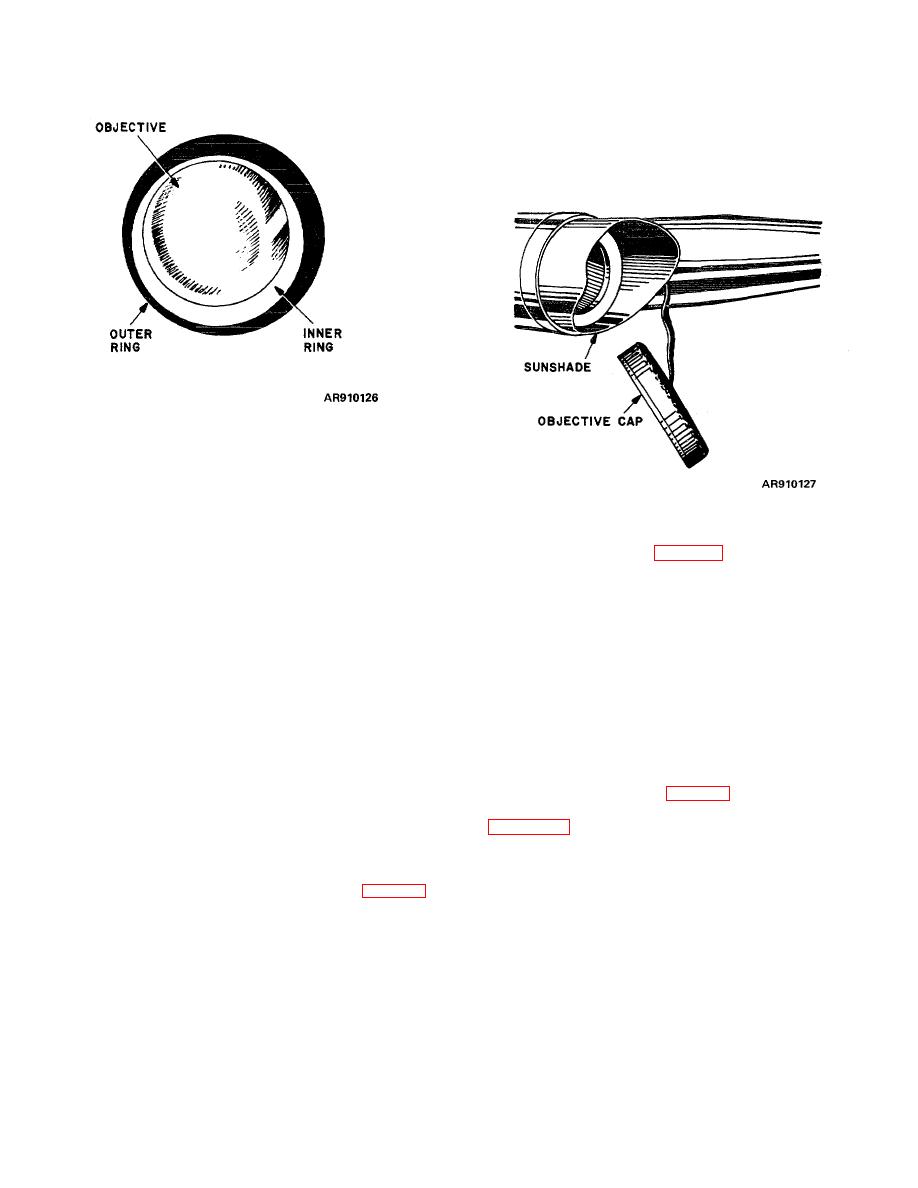 |
|||
|
|
|||
|
Page Title:
Figure 4-36. Eccentric objective mounting. |
|
||
| ||||||||||
|
|
 TM 9-258
caused by sunlight striking the outer face of the
objective, but they protect from extreme heat the
thermosetting cement used to cement the elements of
the objective.
Figure 4-36. Eccentric objective mounting.
b. Prisms were formerly often placed in mountings
designed to hold them firmly and yet afford movement for
exact adjustment. Screws bear upon two faces of the
Figure 4-37. Sunshade and objective cap.
prism to lock it in place in such mountings. By letting out
on one screw and taking up on the other, the prism may
be positioned exactly. Extremely fine adjustments can
which are fitted over the sunshade or objective end of
be made. Care must be exercised in tightening screws
the instrument to protect the objective when the
to insure that prisms will not chip or crack from excessive
instrument is not in use. The caps are usually attached
pressure.
to the instrument by strips of leather to prevent loss.
c. In modern instruments, mirrors and prisms are
4-21. Focusing Devices. The distance between the
bonded to metal brackets or holders. Adjustment of the
reticle and the eyepiece must be adjusted to the
various components is accomplished by the screws
observer's eye so that the reticle and image of the object
bearing against the metal holder.
will be sharply defined and to eliminate eye fatigue. To
4-19. Eyeshields. Eyeshields or eyeguards are fitted
provide this adjustment, the two or more lenses of the
to fire-control instruments to maintain proper eye
eyepiece are mounted in a single tube or lens cell and its
distance and to protect the eyes of the observer from
distance from the reticle (and the focal plane of the
stray light, wind, and injury due to the shock of gun fire or
objective) can be adjusted by a rack and pinion, by a
similar disturbances. Eyeshields are made of rubber,
simple draw tube, or by rotating the entire eyepiece when
plastic, and metal but only those made of soft rubber can
adjusting the diopter scale (fig 4-38) causing it to screw
most effectively meet all of these requirements.
in or out. This is referred to as the diopter movement
4-20. Sunshades and Objective Caps.
a. Sunshades are tubular sections of metal, usually
adjustment type is provided with a scale reading in
with the lower portion cut away, which are fitted into slots
diopters by which this adjustment can be made directly if
around the objective cells of many instruments to protect
the correction required by the eye is known.
against rain and the direct rays of the sun (fig 4-37).
They not only reduce glare which would be
4-36
|
|
Privacy Statement - Press Release - Copyright Information. - Contact Us |